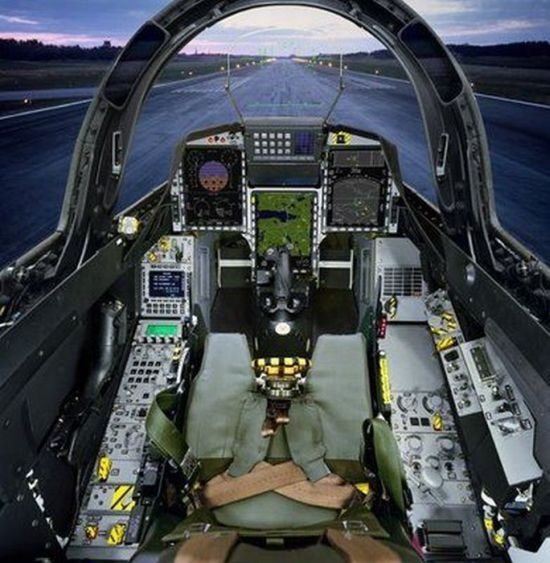|
|
Fighter Jet Cockpit
|
In most cockpits the pilot's control column or joystick is located centrally (centre stick), although in some military fast jets and in some commercial airliners the pilot uses a side-stick (usually located on the outboard side and/or at the left).
The layout of the cockpit, especially in the military fast jet, has undergone standardisation, both within and between aircraft different manufacturers and even different nations. One of the most important developments was the “Basic Six” pattern, later the “Basic T”, developed from 1937 onwards by the Royal Air Force, designed to optimise pilot instrument scanning.
Ergonomics and human factors concerns are important in the design of modern cockpits. The layout and function of cockpit displays controls are designed to increase pilot situation awareness without causing information overload. In the past, many cockpits, especially in fighter aircraft, limited the size of the pilots that could fit into them. Now, cockpits are being designed to accommodate from the 1st percentile female physical size and the 99th percentile male size.
In the design of the cockpit in a military fast jet, the traditional “knobs and dials“ associated with the cockpit are mainly absent. Instrument panels are now almost wholly replaced by electronic displays which are themselves often re-configurable to save space. While some hard-wired dedicated switches must still be used for reasons of integrity and safety, many traditional controls are replaced by multi-function re-configurable controls or so-called “soft keys”. Controls are incorporated onto the stick and throttle to enable the pilot to maintain a head-up and eyes-out position – the so-called Hands On Throttle And Stick or HOTAS concept,. These controls may be then further augmented by new control media such as head pointing with a Helmet Mounted Sighting System or Direct Voice Input (DVI). New advances in auditory displays even allow for Direct Voice Output of aircraft status information and for the spatial localisation of warning sounds for improved monitoring of aircraft systems. A central concept in the design of the cockpit is the Design Eye Position or "DEP".
|
|









